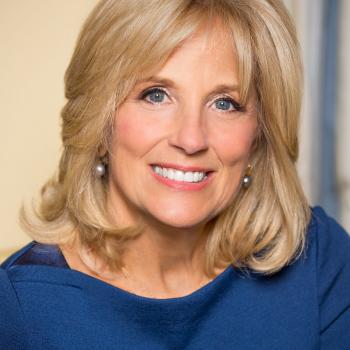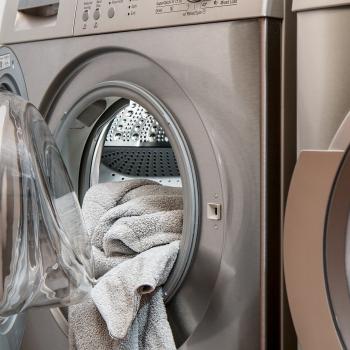I recently shared an excerpt from an article encouraging parents to talk to their sons about rape. I thought a couple of the comments on that post were worth pulling out, and they reminded me of some of the various anti-rape PSAs I’ve seen recently. First the comments, then the videos, and then a challenge for you all. If you like, you can simply scroll down the the videos.
To start with, Brennan pointed out that we shouldn’t assume rapists don’t know what they’re doing, or that rape is some sort of “accidental” crime committed by people who honestly didn’t realize what they were doing was rape.
I’m torn about this. On the one hand, we should absolutely emphasize the concept of consent to boys and girls–that it’s not okay for your partner to not respect your wishes and it’s not okay for you to not respect theirs. But, on the other hand, I feel like articles like this reinforce the misconception that rape happens as a result of misunderstandings or lack of education or “bad communication.” In actuality, the odds of a man being a rapist are much lower than the odds of a woman (or man) having been raped. The vast majority of rapes are committed by a small segment of repeat offenders who know exactly what they’re doing. It’s usually not the creepy guy in the bushes–often it’s the charming guy at the bar–but odds are he’s done it before and will do it again. They’re not *all* the peers and classmates and ex-boyfriends and friends but a small and amoral subset of them. That being said, the education strategies in the article would go a long way towards changing the culture that lets rapists so frequently get away with it. So, I wouldn’t frame it as “teaching your son not to rape” but as “enlisting your son in the fight against rape culture.” And one of the cultural concepts that we need to push back against is the idea that offenders are basically “good guys” who “made a mistake.”
Rosa responded to Brennen not by disagreeing strictly speaking but rather by emphasizing that understanding what consent really means is important, and is something we do need to be teaching young people.
I think, though, that being really really clear about what consent means – starting like everyone says with basic things like tickling, conversation, just general “how do you behave with people” rules that are easy generalizable to sexual situations later – stops that uneasy feeling of maybe-that’s-not-so-bad that lets those rapists get away with it. The serial rapists are dependent on a kind of grudging support from our entire culture. Victims don’t call them out because they feel like they deserved it, or it was a misunderstanding, or nobody will believe them. Other people accept boundary-pushing behavior and rape culture jokes and stereotypes, letting the serial rapists believe they are doing what everyone does.
If we have a very clear, public, baseline idea about consent and how it works, it will be clear to everyone involved that those kinds of mistakes are basic ones nobody should make. Not grey areas, not “bordering on creepy”. Clear faux pas like spitting in the soup bowl. Then they are easily called out without ever using the fraught word rape.
MrPopularSentiment also responded to Brennen, pointing out that many cultural narratives serve to turn young men into borderline rapists, and that these narratives need to be challenged.
The narrative of women are the gatekeepers and a man’s job is to pressure them into “giving up” sex turns every single man into this “fuzzy grey area” rapist. THAT is what this is addressing, and THAT absolutely needs to be addressed.
I also think that teaching our sons what rape looks like, and teaching them about respect, also teaches them to police each other about it. If a guy is being skeevy at a party and every other man there respects women, that guy is not “getting lucky.” They won’t allow him. Instead of what happens now, where the skeevy guy is seen as someone who is “succeeding,” and may even be cheered on or helped by self-appointed “wing men.”
Finally, Angela commented on the post pointing out that rape is simply part of a continuum of ways to objectify women. And that even things like last week’s viral modesty video risk fostering a culture where rape can be excused and explained away by both the public and the perpetrator (and, often, the victim).
One thing that I wish more people understood is that rape is the extreme end point on an entire scale of ways to objectify and control women. I’ve seen so many people brush off the idea that modesty/patriarchy fuels rape culture because their church isn’t filled with rapists. Of course many rapists are never publicly exposed so there could easily be rapists among their congregation but for the most part they’re probably right. Most men are not rapists, even in patriarchal cultures. When I watched that viral modesty video I certainly wasn’t thinking that those young men who were dancing and singing were all a bunch of rapists. I wouldn’t be surprised if none of them are. However I did feel that they’re being conditioned to objectify and control women under the guise of good intentions. I’d consider their performance to rank at the very bottom of the scale. The next rung might be more overt judging and slut slamming, then blaming rape victims for asking for it. Several steps farther up the scale might be coercing wives into sex to keep husbands from straying and then the final endpoint would be overriding their refusal for sex entirely.
My thoughts? I don’t think you can unlink the importance of countering cultural narratives from teaching young men (or young men) not to rape. The idea that women who dress like “sluts” are making themselves sexually available to any interested party both means that people are more likely to victim blame when a rape takes place, thus excusing the rapist. At the same time, this cultural idea that women are “conquests” who need to be “pursued” and that women who say “no” just need convincing encourages men to push past women’s boundaries and not take no for an answer. Yes, I am sure it is the case that most rapists know very well what they are doing. But I also think there are more than a few men who push past women’s boundaries, urged on by cultural ideas about masculinity and femininity, modesty and conquest. And more than that, there are plenty more people who excuse rapists because of these same cultural ideas. Take, for example, the most depressing thing I have read lately, in which the family of a rape victim was literally hounded out of town while the rapist went free and was defended by the community.
Now on to the PSAs. I find PSAs interesting because they promise a way to challenge the toxic cultural ideas that form the backdrop to both how rape is committed and how people respond to it. This first one is from New Zealand, and makes a point about bystanders, including friends, roommates, employees, and strangers.
http://www.youtube.com/watch?v=hE9FFvIYPg8The next two PSAs both focus on those who may commit rape—although I suppose they also focus on changing cultural narratives about rape. The first one tackles supposed “gray” areas and the second one tackles the idea that women are “asking for it” when they wear revealing clothing.
This last one was made by an ordinary person rather than by an organization. It also tackles both common cultural narratives and those who might commit rape. It was made in response to the Steubenville rape case.
While I may have some nitpicks, in general I liked all four of these anti-rape PSAs. I think it’s important to remember that even those that target rapists are really also targeting the culture at large. They make it clear that the woman is not to blame in these situations, even if she wore short skirts, drank alcohol, or made out with someone earlier. They encourage people to be introspective and to challenge the narratives that allow rape to thrive. They encourage bystanders, especially friends and roommates, to watch out for those around them, and they challenge some of the toxic ideas our culture promites. I see all of this as positive.
Finally, my challenge. If you had all the money you needed, and were to design an anti-rape PSA, what would it look like? What message would it send, and how would you convey it?














